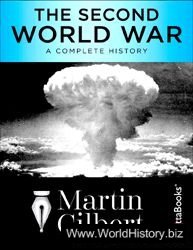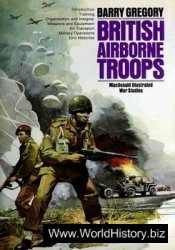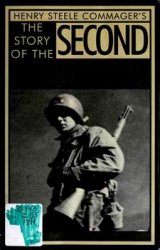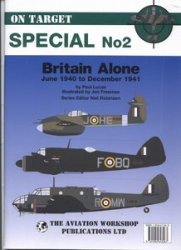SLAM (“seek, locate, annihilate, monitor”). The technique of coordinating heavy ground and naval artillery, tactical air support, and B-52 bombardment against enemy troop concentrations developed by usAF Force Gen Momyer during Vietnam War. B-52s struck first, then tactical air, naval gunfire, and finally ground artillery, creating waves of fire against small target areas. First applied in Operation “Neutralize” to relieve Con Thien in September-October 1967.
Slessor, Marshal of the RAF Sir
John (1897-1979). Br. Director of Plans, Air Ministry 1937-41, Assistant Chief of the Air Staff (Policy) 1942-43, Aoc-in-c, Coastal Command 1943-44, c-in-c, raf Mediterranean and Middle East 1944-45, Slessor had a distinguished flying career in World War I. He became one of the most thoughtful and perceptive of the raf’s officers and, amongst them, probably exerted a greater influence on air policy in World War II than anyone other than Portal. He was chiefly responsible for the Western Air Plans before the war and later, as Assistant Chief of the Air Staff, played a critically important role in reconciling the severely different views of Portal and Arnold. As Aoc-in-c, Coastal Command, in consort with naval colleagues, he virtually saw off the grave threat posed by U-boats operating in and near the Bay of Biscay. His diplomatic skill, however, did not avail when it came to dealing with the Russians on the question of helping the Poles in their rising against the Germans in 1944. ANF.
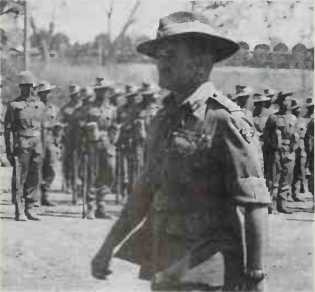
Gen Slim enters Mandalay, 1945
Slim, Field Marshal Lord (1891
1970). Br. Joined the armv as a
Private in 1914. Fought in Gallipoli and Mesopotamia. He commanded 10th Indian Division against Vichy forces in Syria in 1941. Sent to Burma in March 1942, he took over the newly foi'med “Burcorps”: virtually all units in Burma. His task was to hold the army together in its long retreat to India. In the following reorganization, he was given XV Corps, which included 14th and 26th Indian Divisions. His forces were involved in the first abortive advance into Ara-kan. A major reorganization followed and Slim took over the Fourteenth Army on October 15 1943. His first major test was the Japanese U-Go offensive, March-July 1944, which demanded nerve and stamina.
The next stage was complicated by the opposed objectives of Americans and British. The former wanted the route to China protected; the latter wanted to free Burma. Instructions issued from SEAC on September 16 1944
Reflected these contradictions. British Indian forces were to clear Upper Burma from the Japanese, and, in a quite separate operation, there would be a seaboime assault on Rangoon. Operation “Capital”, the plan to move into Upper Burma, was expanded by Slim in mid-December into “Extended Capital” to exploit opportunities for an advance into Lower Burma. One great hazard was the limited time available: only four months before the onset of the monsoon. Slim went confidently ahead, and his boldness succeeded: on May 6, Fourteenth Army linked up with the disembarking XV Corps at Hlegu. 18 miles (29km) from Rangoon.
Fourteenth Army was then to be switched to Malaya. Sir Oliver Leese informed Slim that planning for Malaya would be undertaken by the staff of Fourteenth Army and that mopping-up operations in Burma would be done by a newly formed Twelfth Army, which he. Slim, would take over. Slim refused and asked to be relieved. This bizarre situation was - vigorously reversed by the ciGS in London, Brooke, who relieved Leese and designated Slim as his successor.
After the war he was Chief of Imperial General Staff, and later Governor-General of Australia (1953-60). HT.
Small arms. Light weapons carried by servicemen for their personal use. At the beginning of the century small arms were exclusively pistols and rifles; the term now embraces light and medium machine guns, submachine guns and automatic rifles.
Smart bombs (Razon/Tarazon).
In late 1950 the usaf experimented with precision weapons against targets like Korean railway bridges. The first tests involved Razon bombs dropped from B-29 Superfortresses of the 19th Bombardment Group based on Okinawa. The Razon, developed during World War II, had remote controlled tail fins which allowed the bombardier to alter range and azimuth once the bomb had left the aircraft. Technical difficulties with the first batch of bombs were overcome and 15 bridges were eventually destroyed. Razon, however, was too light to damage large structures. In December 1950 the Tarazon was tested. This used the same guidance mechanism but weighed six tons. On January 13 1951 a B-29 destroyed two spans of the railway bridge at Kanggye with a Tarazon from a height of 15,000ft (4,500m). Tarazon,
However, proved uni’eliable and was abandoned in March 1951. CM.
Smith, Lt Gen Holland McTyeire (“Howlin’ Mad’’) (1882-1967). US. Senior US Marine Corps general of the Pacific war, an able, ruthless and undiplomatic commander, Smith exerted major influence on the development of amphibious warfare. As commanding general. Amphibious Force, Pacific Fleet (from September 1943, V Amphibious Corps) and, from August 1944, Fleet Marine Force, Pacific, he oversaw the recapture of the Aleutians and the invasions of the Gilberts and Marshalls. His dismissal of Maj Gen Ralph Smith, USA, for “poor performance” on Saipan provoked bitter argument between the US Navy/Marines and the Army: he was not given a major command postwar, retiring in 1946. RO’N.




 World History
World History